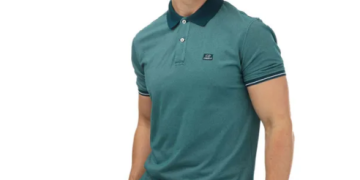Introduction
In the world of fashion, there’s a growing movement towards cruelty-free practices and vegan materials. This article delves into the realm of cruelty-free fashion, exploring the significance of embracing vegan materials in ethical design.
Understanding Cruelty-Free Fashion
Cruelty-free fashion refers to clothing and accessories that are produced without causing harm to animals. It encompasses the use of vegan materials, such as plant-based fabrics and synthetic alternatives, and the avoidance of animal-derived components, such as leather, fur, and wool. Cruelty-free fashion aligns with ethical and environmental principles, promoting compassion towards animals and reducing the industry’s ecological footprint.
Importance of Vegan Materials in Ethical Design
Vegan materials play a central role in ethical design, offering a sustainable and cruelty-free alternative to animal-derived materials. By opting for plant-based fabrics like cotton, hemp, bamboo, and lyocell, designers can create stylish and durable garments without contributing to animal exploitation. Additionally, synthetic materials such as polyester and nylon provide versatile options for fashion without harming animals or the environment.
The Rise of Cruelty-Free Fashion
In recent years, there has been a significant shift towards cruelty-free fashion, driven by growing consumer awareness and demand for ethical and sustainable products. Fashion brands are increasingly adopting cruelty-free practices and incorporating vegan materials into their collections, reflecting changing attitudes towards animal rights and environmental conservation. As a result, cruelty-free fashion has become a mainstream movement, with vegan options available across a wide range of styles and price points.
Vegan Materials in Fashion
Vegan materials encompass a diverse array of options, ranging from natural fibers to synthetic alternatives. Plant-based fabrics like cotton and hemp offer breathability, durability, and versatility, making them ideal for a variety of clothing items. Meanwhile, innovative materials such as pineapple leather (Piñatex), mushroom leather (Mylo), and recycled polyester provide sustainable alternatives to traditional leather and synthetic fabrics.
Benefits of Embracing Vegan Materials
Embracing vegan materials in fashion offers numerous benefits, both for animals and the environment. Vegan materials are cruelty-free, meaning they do not involve the exploitation or harm of animals in their production. Additionally, vegan materials tend to have a lower environmental impact than animal-derived materials, as they require fewer resources and emit fewer greenhouse gases during production. By choosing vegan materials, fashion brands can promote ethical and sustainable practices while satisfying consumer demand for cruelty-free products.
Challenges in Cruelty-Free Fashion
Despite its many advantages, cruelty-free fashion also faces several challenges, including limited availability of vegan materials, higher production costs, and lack of consumer awareness. Additionally, ensuring the ethical sourcing and production of vegan materials can be complex, requiring transparency and traceability throughout the supply chain. However, with increasing investment in research and development, as well as growing consumer demand for ethical fashion, these challenges are gradually being addressed.
Ethical Design Practices
Ethical design practices are essential for ensuring the integrity and sustainability of cruelty-free fashion. This includes prioritizing transparency and traceability in the sourcing and production of materials, as well as adhering to fair labor practices and environmental standards. By adopting ethical design practices, fashion brands can demonstrate their commitment to social responsibility and environmental stewardship while creating stylish and conscientious products.
Sustainable and Vegan Fashion Brands
A growing number of fashion brands are leading the way in cruelty-free fashion, offering stylish and sustainable alternatives to traditional animal-derived materials. From luxury labels to independent designers, these brands prioritize ethics and sustainability in their collections, showcasing the potential of vegan materials to revolutionize the fashion industry. By supporting sustainable and vegan fashion brands, consumers can align their values with their purchasing decisions and contribute to positive change in the industry.
Consumer Awareness and Demand
Consumer awareness and demand play a crucial role in driving the growth of cruelty-free fashion. As more people become informed about the ethical and environmental implications of their clothing choices, they are increasingly seeking out vegan and cruelty-free options. By raising awareness about the benefits of vegan materials and advocating for ethical fashion practices, consumers can influence industry trends and encourage brands to embrace cruelty-free principles.
The Future of Cruelty-Free Fashion
The future of cruelty-free fashion looks promising, with continued innovation in vegan materials and growing consumer demand for ethical and sustainable products. As fashion brands increasingly prioritize cruelty-free practices and invest in sustainable alternatives, the industry is poised to become more compassionate and environmentally friendly. By embracing vegan materials and ethical design practices, fashion has the potential to lead the way towards a more humane and sustainable future.
Conclusion
Cruelty-free fashion represents a paradigm shift in the fashion industry, offering a compassionate and sustainable alternative to traditional animal-derived materials. By embracing vegan materials and ethical design practices, fashion brands can promote compassion towards animals, reduce environmental impact, and meet the growing demand for ethical and sustainable products. As consumers increasingly prioritize cruelty-free options, the future of fashion is poised to be both stylish and conscientious.

FAQs
What is cruelty-free fashion?
Cruelty-free fashion refers to clothing and accessories that are produced without causing harm to animals, including the avoidance of animal-derived materials such as leather, fur, and wool.
What are vegan materials in fashion?
Vegan materials in fashion are those that are derived from plants or synthetic sources and do not involve the use of animal products. Examples include cotton, hemp, bamboo, and synthetic fabrics like polyester and nylon.
What are the benefits of embracing vegan materials in fashion?
Embracing vegan materials in fashion promotes ethical and sustainable practices, reduces animal exploitation, and minimizes environmental impact. Vegan materials also offer versatility, durability, and style without the need for animal-derived materials.
What challenges does cruelty-free fashion face?
Challenges in cruelty-free fashion include limited availability of vegan materials, higher production costs, and lack of consumer awareness. Ensuring ethical sourcing and production of vegan materials also poses challenges in terms of transparency and traceability.
How can consumers support cruelty-free fashion?
Consumers can support cruelty-free fashion by choosing vegan and ethically produced products, raising awareness about the importance of ethical fashion practices, and advocating for transparency and accountability within the fashion industry.




